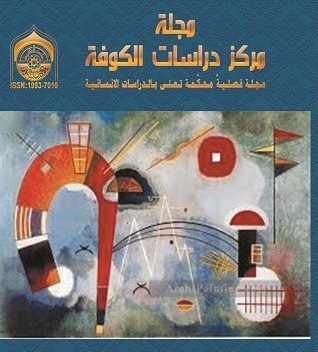The knot and its mechanisms in some of the stories (what Youssef said) by Sabah Abbas Anouz
DOI:
https://doi.org/10.36322/jksc.v1i69.12570Keywords:
node, presentation, events, climax, solutionAbstract
The research dealt with the knot and its mechanisms in some of the stories (what Youssef said) because of the truthfulness of the experiences that the stories had gone through, and the distance from falsifying or obscuring facts, until the message of literature was clear, extending its reformist bridges between the creator and the recipient. The text is a special world that the recipient understands with its objective signals and data that control its direction, but it is based on the need to arm the readers themselves with a certain level of culture to understand the text through rooting and analysis of the topics it touched upon, revealing the energies of expressing the issues and the writer’s positions on them and deepening their experiences through The knot that made the text a dire reality that the recipient feels as a present and not as an imaginary image. The knot was characterized by its growing narrative starting from the show and passing through the events and the climax to solving the knot. It became clear to us that the writer places for the reader a world molded with an interesting narrative character in which the narrator moves from the real world to imaginary worlds parallel to him. Linguistics on the one hand and poetic stylistics on the other hand, and the one who scrutinizes the semantic depth of the artistic beauty of the stories sees to him that this fine literary casting was not spontaneous, but rather has artistic connections that pull each other, and we will see that by studying the knot in (What Yusef said)
Downloads
References
صباح عباس عنوز: ما قاله يوسف: ط1، 1441ه- 2020م ،مؤسسة ثائر العصامي.
الموقع الرسمي للأستاذ الدكتور صباح عباس عنوز نسخة محفوظة 02 فبراير 2017 على موقع واي باك مشين.
عز الدين إسماعيل: الشعر في إطار العصر الثوري، بيروت : دار الحداثة ، ط2.
مبارك، زكي: النثر الفني في القرن الرابع، مؤسسة هنداوي للتعليم والثقافة ، 2012 .
عزيزة، مريدن، دار الفكر، بيروت، 1980م.
أحمد هيكل، تطور الأدب الحديث تطور الأدب الحديث في مصر من أوائل القرن التاسع إلى قيام الحرب الكبرى الثانية، الطبعة الثانية، دار المعارف، القاهرة، 1994م.
مير صادقي: عناصر داستان ، طهران ، ط5، ( 1390)
ناصر إيراني، هنر رمان ، طهران ، ط1.
جيرار جينيت: خطاب الحكاية ، ترجمة : محمد معتصم وآخرون ، ط2، المجلس الأعلى للثقافة (1997
عبدالسلام زهران: توجيه والإرشاد النفسي، عالم الكتب ، ط3
طه، الوادي، دراسة في نقد الرواية، الطبعة الثالثة، دار المعارف القاهرة، 1994م
مجلة البيان (٢٣٨ عددا) المؤلف: تصدر عن المنتدى الإسلامي ج214-: ج214
داد، سيما : اصطلاحات أدبي ، ط2.
عبدالملك مرتاض: في نظرية الرواية، (بحث في تقنيات السرد) ، طبعة الكويت، عالم المعرفة،
رضايي ، عربعلي ( 1382) : وازكان توصيفي ادبيات طهران ، نشر فرهن معاصر ، ط1
Downloads
Published
How to Cite
Issue
Section
License
Copyright (c) 2023 م.م. انوار عبدالامير مسلم الخاقاني

This work is licensed under a Creative Commons Attribution 4.0 International License.
Permit others to distribute and copy the manuscript, to create extracts, abstracts, and other revised versions, adaptations, or derivative works of or from the manuscript (such as a translation), to include in a collective work, to text or data mine the article, even for commercial purposes, as long as they credit the author(s), do not represent the author as endorsing their adaptation of the article, and do not modify the article in such a way as to damage the author''''s honor or reputation. Further details are found at Creative Commons Attribution 4.0 International (CC BY 4.0)






























